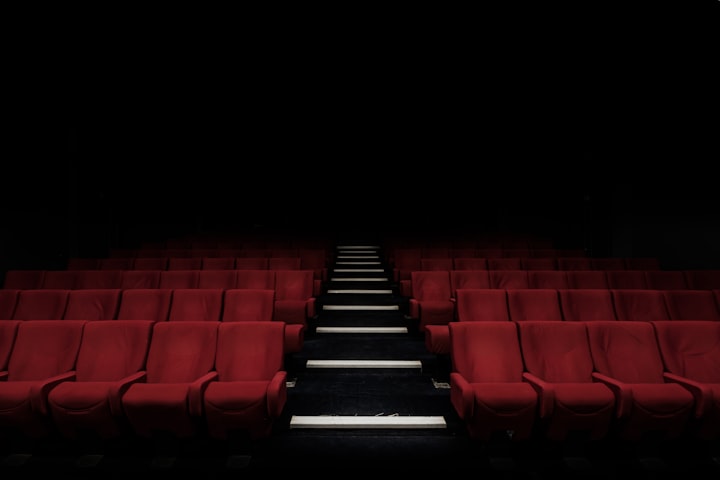'Smile': The Movie That is Scared of Mental Health
Review of "Smile" (2022) *with spoilers*

Besides the repeat "twists", miniscule plot holes, occasional bad acting, and anticlimactic jump scares, "Smile" was supposed to be a movie about the masks of trauma. Instead, the movie describes mental health with little consideration and sensitivity.
Many villians are portrayed with a signature laugh or smile such as: the Joker, the Cheshire Cat, the Slasher, the clown in It, the list goes on. Writers will give villians trustworthy characteristics so their contrast of good vs. evil hold more weight. Arthur Schopenhauer states that this characteristic of villians represents “open and candid enjoyment” from others' suffering. There is even a fear of smiley faces called visiosubrideophobia that probably stemmed from mistrust. Furthermore and slightly more sinister, a defense mechanism in depression is to put on a facade of a smile. 'Eccedentsiast' defines those who hide behind a smile to convince others that they are happy. The director of 'Smile', Parker Finn, uses this trope as we follow the main character Rose. He took something that was comforting and indearing and twisted it to prefix death. (Such as how clowns were once funny and comforting and now are a staple in horror.) The eerie and emotionless smile that characters have in this movie represents a mask of trauma.
Dr. Rose Cotter (played by Kevin Bacon's daughter, Sosie Bacon) works in a hospital as a psychiatrist. Dr. Cotter briefly visits a patient named Laura who is seeing a being whom the viewers can only symbolize as depression or trauma. The patient describes this as a "person, but not a person". We learn later in the movie that this being is a physical monster and not something that was contrived in Laura's mind. Laura seems to be fighting this demon both physically and mentally, but this quickly falls short when she slices her own throat in front of Rose.
Rose is traumatized from this event and talks to authorities, who dismisses Laura and says she "obviously was crazy" and brushes off Rose's sympathy for Laura. Rose then confides in her fiance, who mentions that people who are seeing things are "nutjobs" and "crazies", giving the message to dismiss the people that are fighting with their minds. Not only does he refuse to understand, but he then bombards Rose with her therapist without a compromise, and then leaves the relationship.
When events unfold, Rose starts to see hallucinations and is experiencing timelines that don't add up. She tries to tell her sister (a classic white-collar boujie bitch) what is happening. Her sister doesn't care to listen and cuts her away from the rest of family, which could have possibly stopped her demise. The movie depicts that it is okay for the fiance and the sister to not be involved. Yet another example of how the stigma of mental health was portrayed negatively.
However, there are brief cuts of the camera that show a touch of sympathy from Rose's nephew and even Rose's boss at the hospital. I believe that Finn is trying to flirt with condolence but wanted to symbolize passing on PTSD as a burden. That's exactly how mental health is portrayed: as a burden. Nobody understands Rose and she is seen as a burden, which in turn, makes her more frusturated and anxious and magnifies the cycle. This "burden" of mental health is seen as an infectious disease, which nobody cares to treat.
When Rose confides in Joel, her ex-boyfriend, he is the only person that believes her only because he sees physical proof that a curse is happening. We as the viewers already know that Joel still has feelings for Rose, so that motivates him helping. After a quick Google search and (illegal) 'police searches' (on a home computer?) and sharing sensitive information along with murder evidence, (which took me out of the movie magic), a curse is discovered that travels from one witness of suicide to another, creating a chain of gory suicide/murder. The only way to break the chain is to kill yourself without a witness or to kill someone else. Options that are nonsensical solutions that we as the viewers should not take along with us, especially if someone is suffering in their mental health.
There are brief scenes where Finn shows depression and anxiety almost to a T. For example, at the birthday party scene, the viewers are experiencing the party through Rose's eyes, including muffled words, fake smiles through anxiety, and snapping in and out of reality.
At no point in the movie does it mention how we can battle or work with our traumas, instead, it shows the stigma against mental health. Towards the end, Rose escapes to her childhood home to face the battle of the monster by herself. She relives the trauma of her mother's death. It is unclear what the message is, if Finn is trying to symbolize depression and mental health as the monster: are we supposed to run away and isolate ourselves from our trauma? Or are we the only ones that can feel exactly what we know we feel and have to face the monster of unprocessed trauma by ourselves? Again, solutions that should not leave a viewer wondering.
The color choices throughout the movie are another nod to the facade of depression. Bright colors are seen pigmenting through the scenes, and just like a smile, the director uses objects and notes to juxtapose the things that give us comfort. There was one detail that stood out to me in the movie. In Joel's apartment, he has a poster that has an eerie figure on it, and the words, "Gli Speracolati" underneath. This is an old Italian drama about downhill skiing, and according to The Austin Chronicle, Parker Finn "joked" about the symbolism of the downhill demise of the main character.
Sosie Bacon was a fascinating actor with teary-eyed close-ups and macabre screams throughout the movie. Her fiance, played by Jesse T. Usher, had mediocre acting especially playing across from Bacon. And Gillian Zinser, who played Rose's sister, also had beats where her acting seemed canned and almost predictable. There were even some moments, such as unnecessary camera angles and poor CGI, that almost looked like they were done amateurly.
In conclusion, amongst high rising charts and ticket sales, the portrayal of mental health in this horror film was too daft and left me angry rather than scared.
About the Creator
Nicole Keefe
Part time artist, writer, and hobbiest who isn't afraid to learn and step out of comfort zones.






Comments (1)
Thank you for sharing this article